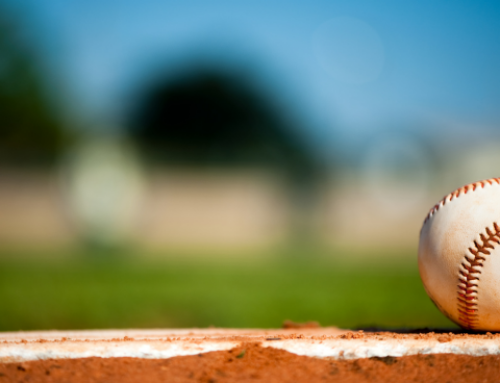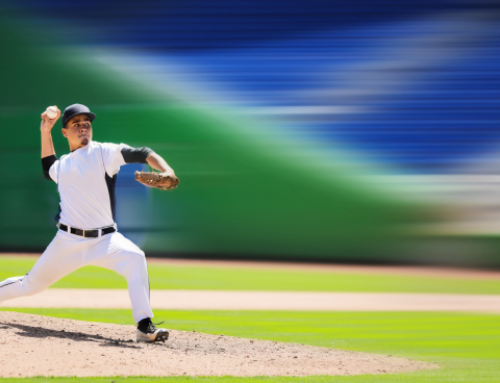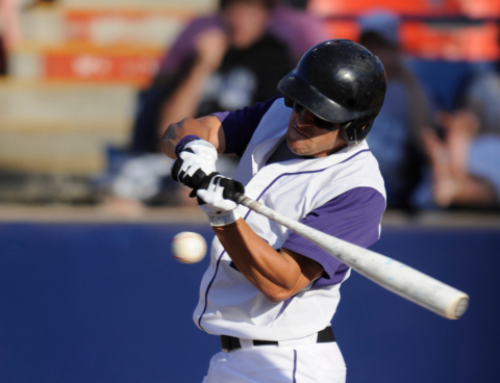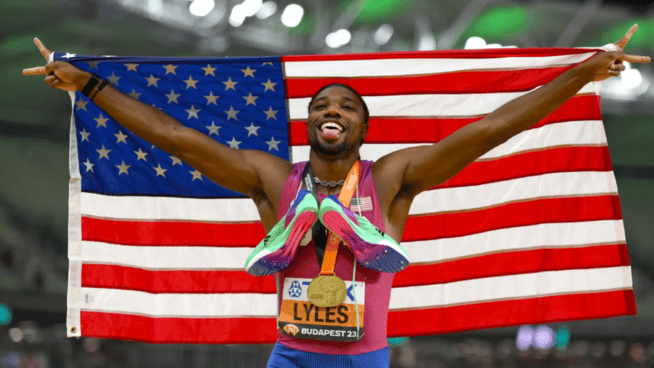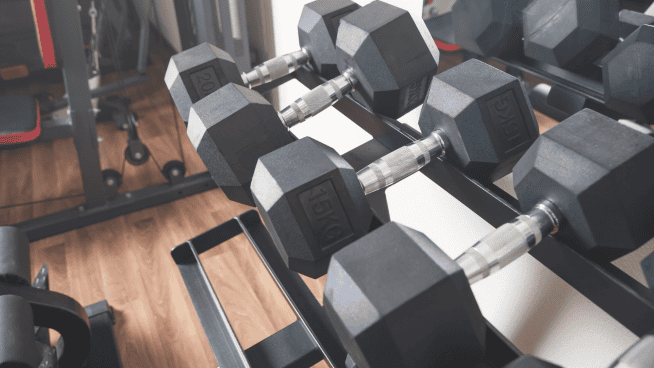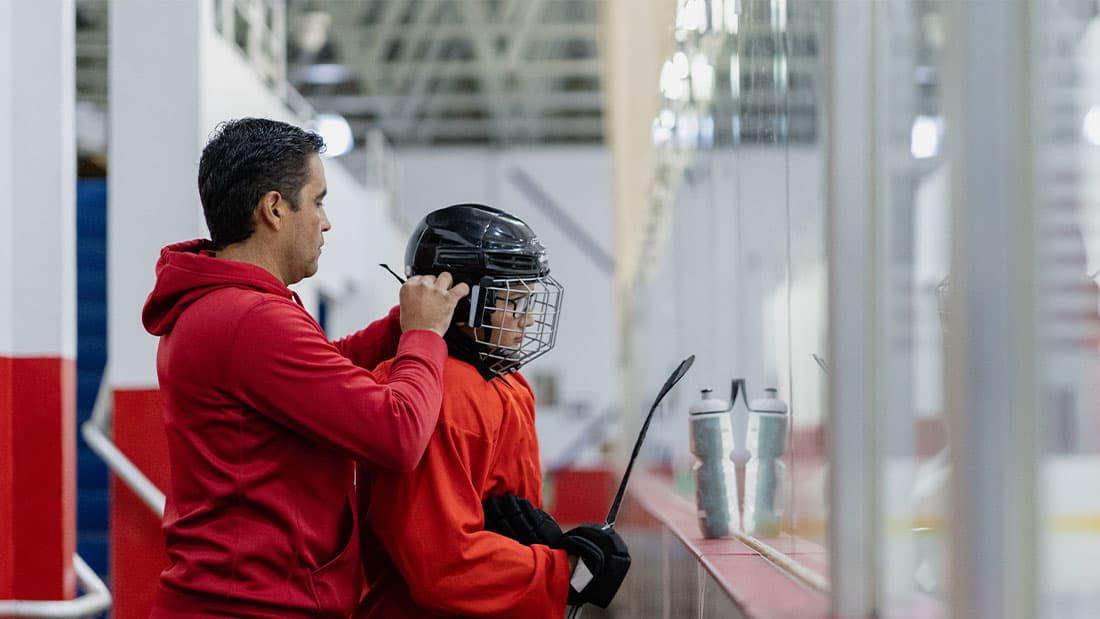The Best Baseball Cleats of 2017 (with Buyer’s Advice from an MLB Pro)
Wouldn’t it be great if we were all professional baseball players and could design our own shoes that would be custom molded specifically to fit our feet? It would. But alas. Even though in recent years there have been really cool breakthroughs like Nike ID and New Balance’s customizable cleats, for the most part these programs have been more about aesthetics than function. When it comes to fit and feel, most of us have to work with cleats we find on store shelves.
The good news is that there is a wider range of baseball cleats than ever available on those shelves (and through online retailers). One of them is bound to be a perfect fit for you. In this review, you will find:
- A rundown of the Best Baseball Cleats available according to customer reviews.
- Reviews of every baseball cleat available from every major brand, including adidas, New Balance, Nike, Mizuno and Under Armour.
- A Baseball Cleat Buyer’s Guide — things you should keep in mind when you shop, including tips from a Major League Baseball Equipment Manager.
- Baseball Cleat Care — what you can do to keep your cleats feeling and performing in top shape throughout the season.
The Best Baseball Cleats 2017
According to user reviews on the website of our partner, Eastbay, the following 11 cleats have performed the best on the diamond:
Nike Vapor Ultrafly
New Balance 4040v3
Jordan Retro 12 Metal
New Balance 406 v1
Under Armour Deception Mid DT
Mizuno Heist IQ Mid
Nike Air Huarache
Mizuno 9-Spike Advanced Pro Elite
adidas Energy Boost Icon 2.0
Under Armour Yard Low
Nike Trout 3
Just because other people liked those cleats, however, doesn’t mean that they will be right for you. Which is why we’ve put together a ranking of all the top cleats from major retailers in this guide. You’ll find write-ups of all the shoes on the list above—and many more—in the reviews below.
adidas Baseball Cleats
Adidas’s baseball cleat lines boil down to three main ones—the Boost Icon 2.0, the Afterburner 3 and the Poweralley 4—plus a fourth, the Speed Trainer 3, which is intended for use on turf. As you’d expect from adidas, all three look good but perform better, and they include some of the features you’d see in their high-end running footwear.
adidas Afterburner 3
The afterburner has a low-profile look and a weight to match—it’s one of the lightest options you’ll find on the diamond. Its barely-there feel is helped by a special midsole material, Litestrike EVA, which is lighter than its peers. You’ll also like the abrasion-resistant toe cap and how it extends the life of the shoe.
Cut: Low-cut
Cleat style: Metal
adidas Boost Icon 2.0
The Boost technology in these cleats is said to offer more energy return, meaning that extra bounce from your footfall helps to propel your next step forward. For you, that just means extra speed when you’re trying to steal a base. The seamless upper is flexible and offers a sock-like fit, making the Icon 2.0 both extra comfy and unlikely to chafe.
Cut: Mid-cut
Cleat style: Metal
adidas Poweralley 4
Designed to put a little extra “umph” in your swing, the Poweralley is built for exactly that: Power. A shank plate lends a little extra rigidity to supply you with a solid push off the ground, while the diamond-shaped perforations on the top side let your foot breathe.
Cut: Low-cut or mid-cut
Cleat style: Metal or molded
New Balance Baseball Cleats
New Balance is a well-established brand in baseball. More than 500 MLB players suit up in New Balance baseball cleats, including Miguel Cabrera, Dustin Pedroia and Jose Bautista. The brand offers two main lines of cleats—the 3000v3 and the 4040v3.
New Balance 3000v3
The story here is the heel support and light material. The 3000v3 features the brand’s REVlite cushioning throughout the midsole, but an additional unit underneath the heel gives an extra plush feel to the rear (heel) of the foot.
Cut: Low-cut or mid-cut
Cleat style: Metal, molded or turf
New Balance 4040v3
Another lightweight option, but this one features shoe technology designed to make cuts and lateral movement a little easier—and faster. It’s called PROBANK, and it’s meant to guide your foot’s positioning through those sharp side-to-side movements.
Cut: Low-cut or mid-cut
Cleat style: Metal, molded or turf
Nike Baseball Cleats
Nike features four main lines of baseball cleats—the Trout 3, Vapor Ultrafly Pro, Huarache 2K and the Clipper (the Strike 2 is no longer available from the brand, and only leftover pairs are on the market). The theme running through all of them? Speed. Nike’s cleat lines feature high-end performance technology that you once saw only in running shoes, like durable and lightweight Lunarlon foam cushioning.
Nike Alpha Air Clipper
Gives you plenty of grip to help you get a jump on your competition, whether you’re swiping a base or running down a fly ball. Forget clunky old-school cleats. The Clipper’s build looks and feels more like a sleek running shoe. You’ll enjoy the breathable forefoot and the plush sockliner inside.
Cut: Low-cut
Cleat style: Metal, molded or turf
Nike Alpha Air Huarache 2K Filth
The Air units that helped make Nike a juggernaut come to the diamond, and the result is a fast, responsive and lightweight cleat. The stretchy Flywire upper gives the shoe a glove-like fit on the top side of your foot, which some reviewers have called “the most comfortable upper on any shoe or cleat that I’ve ever owned.”
Cut: Low-cut or mid-cut
Cleat style: Metal, molded or turf
Nike Trout 3
Features Flywire cables that provide more stability, locking the cleat onto your foot. The shoe is named after Los Angeles Angels outfielder Mike Trout. It is said to be inspired by Trout’s speed and power, and you get that feeling with its combination of a strong build but a relatively light and fast feel for its size.
Cut: Mid-cut
Cleat style: Metal, molded or turf
Nike Vapor Ultrafly
A low-profile cleat that’s designed to flat-out fly. The synthetic leather upper and mesh tongue give this shoe excellent breathability in hot summer weather, while the Lunarlon foam underfoot gives you a smooth ride around the basepaths. Recommended for speedsters.
Cut: Low-cut
Cleat style: Metal or molded
Jordan Baseball Cleats
Jordan Brand entered the baseball space a few years ago, putting retro-inspired kicks on the likes of Derek Jeter and C.C. Sabathia. Highly fashionable but built to perform.
Jordan 12 Retro
It’s everything you remember about one of the best shoes ever to grace the hardwood, now available for hardballers. Comfy mid-cut build? Check. His Airness on the tongue? Check and check. It’s a great option for pitchers, because when you’ve got this much style on the mound, you’re gonna catch ’em looking. (Retros of the Jordan 4 and 7 also available.)
Cut: Mid-cut
Cleat style: Metal or molded
Mizuno Baseball Cleats
Mizuno has the second-largest range of cleat offerings, with six lines of baseball cleats available. Four of those six lines (the Dominant IC, Erupt 3, Franchise 8 and Blaze Elite 5) come in either mid- or low-cut options.
Mizuno Blaze Elite 5
Designed for the pros, available for you, the Blaze Elite 5 features deep grooves in the sole of the forefoot, giving you a more natural push-off with every step you take. The tongue is extra padded so your feet will feel good even if your game goes into extra innings.
Cut: Low-cut or mid-cut
Cleat style: Molded
Mizuno Dominant IC
Mizuno’s latest offering offers a relatively high heel-to-toe drop to put your foot in position to take off and run at a moment’s notice. The midsole is made of a soft material the brand calls U4icX, which is one of their lightest materials and usually reserved for performance running shoes. These spikes have serious dig.
Cut: Low-cut or mid-cut
Cleat Style: Metal
Mizuno Advanced Erupt 3
Let’s call this a Turf Shoe Plus. The myriad of tiny spikes underneath provide a surprisingly steady grip that works even on grass and natural surfaces. The thick midsole runs the length of the foot and provides a comfortable platform that’ll feel nice throughout your next doubleheader.
Cut: Low-cut or mid-cut
Cleat Style: Turf
Mizuno 9-Spike Advanced Franchise 8
Here’s a budget-friendly workhorse that just does the job. No frills, nothing fancy, just an old-school cleat that’ll perform when you need it. The long rubber studs dig in nicely on grass and dirt alike. Offers a lot of youth options too.
Cut: Low-cut or mid-cut
Cleat Style: Molded
Mizuno Heist IQ
What do you get when you combine running shoe midsole material with a new anatomical design and solid arch support? An explosive burst on the field that Mizuno calls Innovative Quickness (that’s what “IQ” stands for). Lightweight, breathable and comfortable, the Heist will help you lift plenty of bags when unsuspecting pitchers aren’t looking.
Cut: Low-cut or mid-cut
Cleat Style: Metal
Mizuno 9-Spike Advanced Pro Elite
The brand’s premium model combines a lightweight build with a comfy suede upper that includes some nice extra padding on the tongue. It features the brand’s iconic wave plate in the rearfoot, which adds some cushioning and support to your step without sacrificing the firm feel you want when you push off. Deep grooves in the forefoot also help you run naturally.
Cut: Low-cut
Cleat Style: Metal
Under Armour Baseball Cleats
Under Armour has a robust offering of cleats, including the Deception, which is among the first to combine molded and metal cleats into one. These diamond tip spikes provide additional traction for faster cuts and starts. UA’s premier shoe is the Harper One, named for—you guessed it—Washington Nationals star Bryce Harper. The brand also offers several affordable options, including those for youth players.
Under Armour Harper One
Wow, where to begin with these? There is a lot of high-end shoe technology packed into these kicks. How does that affect you? Well, you’ll find the top-sides of these shoes super comfy thanks to a one-piece upper that’s woven, not stitched. Your feet are extra protected by an internal fit sleeve. And the thick cushioning underfoot is soft enough to protect yet hard enough to channel your speed and power on the field.
Cut: Mid-cut
Cleat style: Metal or molded
Under Armour Leadoff Low
A stalwart performer at a price anyone would like. The Leadoff is a no-frills molded cleat that digs into the muddiest infield and doesn’t miss a step. Friendly to the up-and-comers too, as there are several options available for youth and grade school players in this model.
Cut: Low-cut
Cleat style: Molded
Under Armour Deception Diamond Tips
Not sure if you prefer metal or molded cleats? Now you don’t have to choose. Under Armour’s Diamond Tips give you both. These new cleats give molded spikes a metal tip that offer tons of grip. The Deception also features foam that forms to your foot within the midsole, offering you a more personalized fit.
Cut: Low-cut or mid-cut
Cleat Style: Metal and molded, together at last.
Under Armour Yard
The story with these cleats is the midsole. The Charged Cushioning underfoot feels responsive—you’ll cut on a dime—but also absorbs impact nicely. Upfront there is a deep flex groove that offers a fast feel when you’re trying to leg out a double.
Cut: Low-cut or mid-cut
Cleat Style: Metal
Baseball Cleat Buyer’s Guide
Here are some of the common questions people have when they shop.
How are baseball cleats supposed to fit?
“They should be snug,” says Tony Amato, equipment manager for the Cleveland Indians. “There shouldn’t be a lot of wiggle room.” Amato adds that one thing that can influence what size cleats an athlete selects is the number of socks he plans on wearing. A number of players in the pro ranks opt for more than one. “The guys will wear like three pairs of socks underneath their shoes. They like the extra support and cushioning.” That additional padding also takes up extra space. Your best bet? Bring the socks you plan to wear on game day with you when you shop.
Metal vs. Molded —which is better?
Metal cleats and molded cleats typically follow a similar pattern in terms of how they are positioned underfoot, but metal cleats give athletes a more aggressive grip. The straight metal blades dig deeper into dirt or grass. But not everyone prefers the added traction. “I have some guys who order strictly the molded plastic cleats,” Amato says. “They say it’s easier on their back. There’s a little more give. They’re not planting as hard.”
The other big baseball cleat question: High, Mid- or Low-cut?
Amato says this decision mostly comes down to feel. He says, “Some athletes prefer the extra ankle support of a higher cut, while others opt for something lower. The low top gives you more flexibility but not as much stability.”
What are baseball cleats made out of?
Baseball cleats are a combination of mesh, leather and plastic (and of course, metal if they have metal spikes). In the upper (the part of the shoe that wraps overtop your foot), having more mesh makes the shoe more breathable, while leather offers more protection and a little more responsiveness.
Can baseball cleats be used for football?
No. The exposed metal on the underside of baseball cleats makes using them in football a no-no. You could theoretically get away with using a model with a molded sole; however, they wouldn’t provide the same type of protection that a cleat designed specifically for football offers. Basically, football cleats have reinforced uppers that do a better job of protecting your toes and the tops of your feet. So if someone who was wearing football cleats stepped on your foot, and you were wearing baseball cleats, it would hurt a whole lot more.
Pitchers: Protect Your Toes
“Pitchers should wear a toe so that when they drag on their follow-through it doesn’t tear apart their shoe,” Amato says. He suggests a product called Tuff Toe to help protect and prolong the life of a pitcher’s cleats. Here’s a video showing how to apply Tuff Toe properly:
[youtube video=”hyEIpOR1uS0″ /]Remember: Choose your colors wisely
Your team or league may have color requirements that your shoes need to meet. Talk with your coach to make sure you’re in the know. If you play on several teams, stick with a neutral color scheme like black and white, which works with almost any uniform.
Baseball Cleat Care Guide
Amato says his staff clean players’ cleats every day. Why? Two reasons: aesthetics and performance. On the aesthetics side, it only makes sense that professional players who appear on TV every night should look good—and so should their footwear. But even if that’s not a concern for you or your athlete, the performance element might be. “You don’t want to wear cleats that are caked with mud or dirt,” Amato says. His staff uses Scrubbing Bubbles to clean off the underside of the players’ footwear, and to get the dirt off the tops of the shoes. The last step is to add a little polish to the leather, which helps it stay flexible and conditioned.
Speaking of leather, obviously, that material and water don’t mix particularly well. When a player’s cleats get wet, Amato uses a simple trick to help get their footwear back in working order. “Those are obviously challenging days,” Amato says of times when rain makes his athletes’ shoes soggy. “We’ll put their cleats on top of a dryer so they catch a little heat.” Note that he said “on” and not “in” the dryer. Just that little bit of heat will help remove the moisture—without warping the feel or the shape of the cleat’s upper.
READ MORE ON BASEBALL:
The 10 Best Strength Exercises for Baseball Players
No, Really, Here’s How to Throw a Curveball
A Simple Guide to Baseball Glove Sizes
RECOMMENDED FOR YOU
MOST POPULAR
The Best Baseball Cleats of 2017 (with Buyer’s Advice from an MLB Pro)
Wouldn’t it be great if we were all professional baseball players and could design our own shoes that would be custom molded specifically to fit our feet? It would. But alas. Even though in recent years there have been really cool breakthroughs like Nike ID and New Balance’s customizable cleats, for the most part these programs have been more about aesthetics than function. When it comes to fit and feel, most of us have to work with cleats we find on store shelves.
The good news is that there is a wider range of baseball cleats than ever available on those shelves (and through online retailers). One of them is bound to be a perfect fit for you. In this review, you will find:
- A rundown of the Best Baseball Cleats available according to customer reviews.
- Reviews of every baseball cleat available from every major brand, including adidas, New Balance, Nike, Mizuno and Under Armour.
- A Baseball Cleat Buyer’s Guide — things you should keep in mind when you shop, including tips from a Major League Baseball Equipment Manager.
- Baseball Cleat Care — what you can do to keep your cleats feeling and performing in top shape throughout the season.
The Best Baseball Cleats 2017
According to user reviews on the website of our partner, Eastbay, the following 11 cleats have performed the best on the diamond:
Nike Vapor Ultrafly
New Balance 4040v3
Jordan Retro 12 Metal
New Balance 406 v1
Under Armour Deception Mid DT
Mizuno Heist IQ Mid
Nike Air Huarache
Mizuno 9-Spike Advanced Pro Elite
adidas Energy Boost Icon 2.0
Under Armour Yard Low
Nike Trout 3
Just because other people liked those cleats, however, doesn’t mean that they will be right for you. Which is why we’ve put together a ranking of all the top cleats from major retailers in this guide. You’ll find write-ups of all the shoes on the list above—and many more—in the reviews below.
adidas Baseball Cleats
Adidas’s baseball cleat lines boil down to three main ones—the Boost Icon 2.0, the Afterburner 3 and the Poweralley 4—plus a fourth, the Speed Trainer 3, which is intended for use on turf. As you’d expect from adidas, all three look good but perform better, and they include some of the features you’d see in their high-end running footwear.
adidas Afterburner 3
The afterburner has a low-profile look and a weight to match—it’s one of the lightest options you’ll find on the diamond. Its barely-there feel is helped by a special midsole material, Litestrike EVA, which is lighter than its peers. You’ll also like the abrasion-resistant toe cap and how it extends the life of the shoe.
Cut: Low-cut
Cleat style: Metal
adidas Boost Icon 2.0
The Boost technology in these cleats is said to offer more energy return, meaning that extra bounce from your footfall helps to propel your next step forward. For you, that just means extra speed when you’re trying to steal a base. The seamless upper is flexible and offers a sock-like fit, making the Icon 2.0 both extra comfy and unlikely to chafe.
Cut: Mid-cut
Cleat style: Metal
adidas Poweralley 4
Designed to put a little extra “umph” in your swing, the Poweralley is built for exactly that: Power. A shank plate lends a little extra rigidity to supply you with a solid push off the ground, while the diamond-shaped perforations on the top side let your foot breathe.
Cut: Low-cut or mid-cut
Cleat style: Metal or molded
New Balance Baseball Cleats
New Balance is a well-established brand in baseball. More than 500 MLB players suit up in New Balance baseball cleats, including Miguel Cabrera, Dustin Pedroia and Jose Bautista. The brand offers two main lines of cleats—the 3000v3 and the 4040v3.
New Balance 3000v3
The story here is the heel support and light material. The 3000v3 features the brand’s REVlite cushioning throughout the midsole, but an additional unit underneath the heel gives an extra plush feel to the rear (heel) of the foot.
Cut: Low-cut or mid-cut
Cleat style: Metal, molded or turf
New Balance 4040v3
Another lightweight option, but this one features shoe technology designed to make cuts and lateral movement a little easier—and faster. It’s called PROBANK, and it’s meant to guide your foot’s positioning through those sharp side-to-side movements.
Cut: Low-cut or mid-cut
Cleat style: Metal, molded or turf
Nike Baseball Cleats
Nike features four main lines of baseball cleats—the Trout 3, Vapor Ultrafly Pro, Huarache 2K and the Clipper (the Strike 2 is no longer available from the brand, and only leftover pairs are on the market). The theme running through all of them? Speed. Nike’s cleat lines feature high-end performance technology that you once saw only in running shoes, like durable and lightweight Lunarlon foam cushioning.
Nike Alpha Air Clipper
Gives you plenty of grip to help you get a jump on your competition, whether you’re swiping a base or running down a fly ball. Forget clunky old-school cleats. The Clipper’s build looks and feels more like a sleek running shoe. You’ll enjoy the breathable forefoot and the plush sockliner inside.
Cut: Low-cut
Cleat style: Metal, molded or turf
Nike Alpha Air Huarache 2K Filth
The Air units that helped make Nike a juggernaut come to the diamond, and the result is a fast, responsive and lightweight cleat. The stretchy Flywire upper gives the shoe a glove-like fit on the top side of your foot, which some reviewers have called “the most comfortable upper on any shoe or cleat that I’ve ever owned.”
Cut: Low-cut or mid-cut
Cleat style: Metal, molded or turf
Nike Trout 3
Features Flywire cables that provide more stability, locking the cleat onto your foot. The shoe is named after Los Angeles Angels outfielder Mike Trout. It is said to be inspired by Trout’s speed and power, and you get that feeling with its combination of a strong build but a relatively light and fast feel for its size.
Cut: Mid-cut
Cleat style: Metal, molded or turf
Nike Vapor Ultrafly
A low-profile cleat that’s designed to flat-out fly. The synthetic leather upper and mesh tongue give this shoe excellent breathability in hot summer weather, while the Lunarlon foam underfoot gives you a smooth ride around the basepaths. Recommended for speedsters.
Cut: Low-cut
Cleat style: Metal or molded
Jordan Baseball Cleats
Jordan Brand entered the baseball space a few years ago, putting retro-inspired kicks on the likes of Derek Jeter and C.C. Sabathia. Highly fashionable but built to perform.
Jordan 12 Retro
It’s everything you remember about one of the best shoes ever to grace the hardwood, now available for hardballers. Comfy mid-cut build? Check. His Airness on the tongue? Check and check. It’s a great option for pitchers, because when you’ve got this much style on the mound, you’re gonna catch ’em looking. (Retros of the Jordan 4 and 7 also available.)
Cut: Mid-cut
Cleat style: Metal or molded
Mizuno Baseball Cleats
Mizuno has the second-largest range of cleat offerings, with six lines of baseball cleats available. Four of those six lines (the Dominant IC, Erupt 3, Franchise 8 and Blaze Elite 5) come in either mid- or low-cut options.
Mizuno Blaze Elite 5
Designed for the pros, available for you, the Blaze Elite 5 features deep grooves in the sole of the forefoot, giving you a more natural push-off with every step you take. The tongue is extra padded so your feet will feel good even if your game goes into extra innings.
Cut: Low-cut or mid-cut
Cleat style: Molded
Mizuno Dominant IC
Mizuno’s latest offering offers a relatively high heel-to-toe drop to put your foot in position to take off and run at a moment’s notice. The midsole is made of a soft material the brand calls U4icX, which is one of their lightest materials and usually reserved for performance running shoes. These spikes have serious dig.
Cut: Low-cut or mid-cut
Cleat Style: Metal
Mizuno Advanced Erupt 3
Let’s call this a Turf Shoe Plus. The myriad of tiny spikes underneath provide a surprisingly steady grip that works even on grass and natural surfaces. The thick midsole runs the length of the foot and provides a comfortable platform that’ll feel nice throughout your next doubleheader.
Cut: Low-cut or mid-cut
Cleat Style: Turf
Mizuno 9-Spike Advanced Franchise 8
Here’s a budget-friendly workhorse that just does the job. No frills, nothing fancy, just an old-school cleat that’ll perform when you need it. The long rubber studs dig in nicely on grass and dirt alike. Offers a lot of youth options too.
Cut: Low-cut or mid-cut
Cleat Style: Molded
Mizuno Heist IQ
What do you get when you combine running shoe midsole material with a new anatomical design and solid arch support? An explosive burst on the field that Mizuno calls Innovative Quickness (that’s what “IQ” stands for). Lightweight, breathable and comfortable, the Heist will help you lift plenty of bags when unsuspecting pitchers aren’t looking.
Cut: Low-cut or mid-cut
Cleat Style: Metal
Mizuno 9-Spike Advanced Pro Elite
The brand’s premium model combines a lightweight build with a comfy suede upper that includes some nice extra padding on the tongue. It features the brand’s iconic wave plate in the rearfoot, which adds some cushioning and support to your step without sacrificing the firm feel you want when you push off. Deep grooves in the forefoot also help you run naturally.
Cut: Low-cut
Cleat Style: Metal
Under Armour Baseball Cleats
Under Armour has a robust offering of cleats, including the Deception, which is among the first to combine molded and metal cleats into one. These diamond tip spikes provide additional traction for faster cuts and starts. UA’s premier shoe is the Harper One, named for—you guessed it—Washington Nationals star Bryce Harper. The brand also offers several affordable options, including those for youth players.
Under Armour Harper One
Wow, where to begin with these? There is a lot of high-end shoe technology packed into these kicks. How does that affect you? Well, you’ll find the top-sides of these shoes super comfy thanks to a one-piece upper that’s woven, not stitched. Your feet are extra protected by an internal fit sleeve. And the thick cushioning underfoot is soft enough to protect yet hard enough to channel your speed and power on the field.
Cut: Mid-cut
Cleat style: Metal or molded
Under Armour Leadoff Low
A stalwart performer at a price anyone would like. The Leadoff is a no-frills molded cleat that digs into the muddiest infield and doesn’t miss a step. Friendly to the up-and-comers too, as there are several options available for youth and grade school players in this model.
Cut: Low-cut
Cleat style: Molded
Under Armour Deception Diamond Tips
Not sure if you prefer metal or molded cleats? Now you don’t have to choose. Under Armour’s Diamond Tips give you both. These new cleats give molded spikes a metal tip that offer tons of grip. The Deception also features foam that forms to your foot within the midsole, offering you a more personalized fit.
Cut: Low-cut or mid-cut
Cleat Style: Metal and molded, together at last.
Under Armour Yard
The story with these cleats is the midsole. The Charged Cushioning underfoot feels responsive—you’ll cut on a dime—but also absorbs impact nicely. Upfront there is a deep flex groove that offers a fast feel when you’re trying to leg out a double.
Cut: Low-cut or mid-cut
Cleat Style: Metal
Baseball Cleat Buyer’s Guide
Here are some of the common questions people have when they shop.
How are baseball cleats supposed to fit?
“They should be snug,” says Tony Amato, equipment manager for the Cleveland Indians. “There shouldn’t be a lot of wiggle room.” Amato adds that one thing that can influence what size cleats an athlete selects is the number of socks he plans on wearing. A number of players in the pro ranks opt for more than one. “The guys will wear like three pairs of socks underneath their shoes. They like the extra support and cushioning.” That additional padding also takes up extra space. Your best bet? Bring the socks you plan to wear on game day with you when you shop.
Metal vs. Molded —which is better?
Metal cleats and molded cleats typically follow a similar pattern in terms of how they are positioned underfoot, but metal cleats give athletes a more aggressive grip. The straight metal blades dig deeper into dirt or grass. But not everyone prefers the added traction. “I have some guys who order strictly the molded plastic cleats,” Amato says. “They say it’s easier on their back. There’s a little more give. They’re not planting as hard.”
The other big baseball cleat question: High, Mid- or Low-cut?
Amato says this decision mostly comes down to feel. He says, “Some athletes prefer the extra ankle support of a higher cut, while others opt for something lower. The low top gives you more flexibility but not as much stability.”
What are baseball cleats made out of?
Baseball cleats are a combination of mesh, leather and plastic (and of course, metal if they have metal spikes). In the upper (the part of the shoe that wraps overtop your foot), having more mesh makes the shoe more breathable, while leather offers more protection and a little more responsiveness.
Can baseball cleats be used for football?
No. The exposed metal on the underside of baseball cleats makes using them in football a no-no. You could theoretically get away with using a model with a molded sole; however, they wouldn’t provide the same type of protection that a cleat designed specifically for football offers. Basically, football cleats have reinforced uppers that do a better job of protecting your toes and the tops of your feet. So if someone who was wearing football cleats stepped on your foot, and you were wearing baseball cleats, it would hurt a whole lot more.
Pitchers: Protect Your Toes
“Pitchers should wear a toe so that when they drag on their follow-through it doesn’t tear apart their shoe,” Amato says. He suggests a product called Tuff Toe to help protect and prolong the life of a pitcher’s cleats. Here’s a video showing how to apply Tuff Toe properly:
[youtube video=”hyEIpOR1uS0″ /]Remember: Choose your colors wisely
Your team or league may have color requirements that your shoes need to meet. Talk with your coach to make sure you’re in the know. If you play on several teams, stick with a neutral color scheme like black and white, which works with almost any uniform.
Baseball Cleat Care Guide
Amato says his staff clean players’ cleats every day. Why? Two reasons: aesthetics and performance. On the aesthetics side, it only makes sense that professional players who appear on TV every night should look good—and so should their footwear. But even if that’s not a concern for you or your athlete, the performance element might be. “You don’t want to wear cleats that are caked with mud or dirt,” Amato says. His staff uses Scrubbing Bubbles to clean off the underside of the players’ footwear, and to get the dirt off the tops of the shoes. The last step is to add a little polish to the leather, which helps it stay flexible and conditioned.
Speaking of leather, obviously, that material and water don’t mix particularly well. When a player’s cleats get wet, Amato uses a simple trick to help get their footwear back in working order. “Those are obviously challenging days,” Amato says of times when rain makes his athletes’ shoes soggy. “We’ll put their cleats on top of a dryer so they catch a little heat.” Note that he said “on” and not “in” the dryer. Just that little bit of heat will help remove the moisture—without warping the feel or the shape of the cleat’s upper.
READ MORE ON BASEBALL:
The 10 Best Strength Exercises for Baseball Players
No, Really, Here’s How to Throw a Curveball
A Simple Guide to Baseball Glove Sizes













